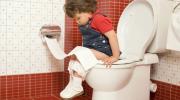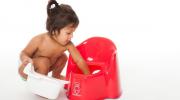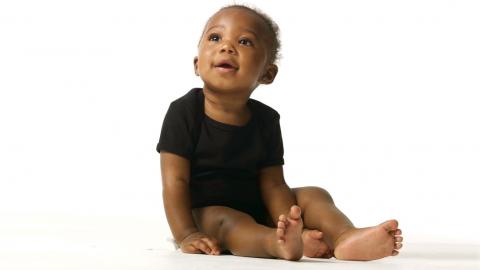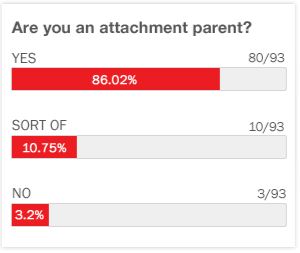Potty Training
Advice on potty training
Potty training is a huge step for both parent and child. If your child is ready to be potty-trained, you are most likely very excited about the prospect of throwing away those diapers for good! So, what’s the secret to a diaper-less home? Timing and lots of patience.
“You know, one of the challenges about toilet training is that we are in a hurry to get it done and get through it, and yet, we have to respect the child’s pace,” says child psychiatrist and author, Joshua Sparrow, “In our society, I think, we still see success in toilet training as a sign of success as a parent. And then, of course, there is the mess and the expense and so of course we want to get through it. But unfortunately, that can become pressure for us and pressure for the child that can backfire and get in the way of the most important thing to support the child’s toilet training, which is having it be at the child’s pace.”
When it is time to begin potty training, focus on maintaining a positive attitude and reminding all of your child’s caregivers to stay
... Read more
positive with you. Begin by placing the potty chair in the bathroom. Build your child’s familiarity with the potty chair by having you child decorate the chair. Encourage your child to sit on the potty chair with or without a diaper. Make sure to use simple, correct terms when talking your child about using the bathroom. Allowing the child to see family members use the toilet will help normalize the action.
Once your child is interested, have them sit on the potty chair without a diaper for a few minutes several times a day. Even if your child only sits there, offer praise for their effort and remind them they can try again later. Try reading a potty-training book with your child while they are sitting on the potty chair.
When you spot your child giving signs they might need the toilet—squirming, squatting, or holding the genital area—respond as fast as possible. Help your child recognize these signs, stop what they are doing, and head to the bathroom. When your child tells you they have to go, praise them!
If your child is refusing to use the potty chair and isn’t getting used to it within a few weeks, it’s time to take a break. They might not be ready yet. Try again in another few months.
Potty training age
When is the right time to start potty training? It depends on the child. Potty training success is based on physical and emotional readiness, not age.
“Children need to be allowed to toilet train when they are ready, not when the parents are ready. They have all of the control and the parent doesn't have any control over this issue,” says potty training expert, Carol Bovill, “Very often, it could be something going on in your lives. You could be pregnant, have a new baby, just moved, and all of a sudden your child decides that they want to start using the toilet. You have to allow them to.”
Some kids show interest in potty training around age 2 but some may not be older until 2 ½ or older. Don’t rush your child. If you start potty training too early for them, it will take longer to train your child.
To help determine when your child is ready, consider if your child seems interested in the potty chair or toilet. Are they interested in wearing underwear? Do they complain about wet diapers? What about the basics—can your child sit down and up from a potty chair? Can your child understand and follow basic directions? If you answered mostly yes, your child may be ready for potty training.
Elimination Communication
Elimination communication is not potty training though it is a practice that make conventional potty training unnecessary. Caregivers practicing elimination communication use timing, signals, cues, and intuition to recognize and respond to a baby’s need to eliminate and enable them to urinate and defecate in an appropriate place, for example, a toilet.
“Elimination communication as an alternative to that really requires a lot of parental attention to be aware of the child’s cues so that then the parent is prepared to put the child over the potty so they’re eliminating in the potty. Certainly, there are advantages and disadvantages to that,” says neuropsychologist Dr. Peter L. Stavinoha.
Elimination communication is inspired by traditional practices of baby care without diapers in less industrialized countries. EC can be started with babies of any age but most people begin soon after birth.
Potty training problems
Unfortunately, regression after settling into potty training is not an unusual occurrence says Dr. Stavinoha.
“Parents need to consider any changes in the household that may be contributing to that. Things like a new baby at home or a move or a change in the family, or any other stressful event can cause a child to regress from their potty training skills. In those cases, parents need to be patient and give them time to regain those skills. They will given that stressful situation will go away. The child will be back on track,” says Dr. Stavinoha, “There are other situations where a child will regress and the parent is kind of scratching their head wondering what is going on. In those instance, parents need to step back and think if there is any factors causing this regression. Is there a fear issue? Is it a stubbornness thing? Is it that the child is bored with it because they feel like they've mastered it? We always recommend that parents revisit those strategies that they were successful using the first time around. That may be scheduling, scheduling session, making sure they are giving lots of praise and positive reinforcement. Over a period of time, the child will potty train again.”
Getting frustrated over your child’s potty training accidents? Carol Bovill, Director of the Mann Family Early Childhood Center of Wilshire Boulevard Temple in Los Angeles, says it’s important to continue on with a positive outlook.
“When your child is ready not to have accidents, they won't be having them,” says Bovill, “Very often, children will have accidents because they are busy playing with a toy, don't want to stop what they are doing, and forget to use the toilet. If this does occur, tell them to go change their clothes. They are very competent. They can put the clothes into the washing machine, and you can leave it open so they can see what is happening. Within a few days, your child will not be having accidents anymore. Smile through it all. Make sure to bring a change of clothes everywhere you go.”
























































